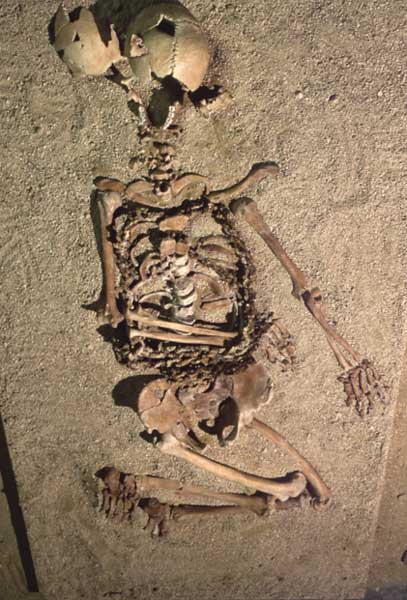
The religious devotion of an ascetic young monk has been preserved through the centuries at Giv‘at Hamatos,
chained in death as in life.
The site lies just 550 yards southeast of Bethlehem’s Mar Elias monastery. Ancient remains at the site have been
recorded over the years in various pilgrim accounts and surveys of the area. Excavations in the 1990s, led by Elena
Kogan-Zehavi of the Israel Antiquities Authority, uncovered finds and structures indicating that the site was inhabited at
various times from the Iron Age (12th–6th centuries B.C.) to the Mameluke period (13th–16th centuries
A.D.).
Of particular interest was a two-chambered subterranean complex, over which a round structure had been built. The
underground rooms were very simple, with a few small niches carved into the walls to serve as storage space. In the middle
of one of the rooms was a skeleton laid out on the floor. A handful of objects were also recovered: a ceramic cup, a jug, a
bronze and glass lamp, a knife, an iron belt buckle and a pair of horseshoes. Based on these finds, scholars have dated the
entire complex to the Byzantine period (sixth–eighth centuries A.D.).
The skeleton, belonging to a man about 25 years old, was found bound in chains and lying on his back, with the legs
bent. The skull had been crushed, probably by the later collapse of the roof. The iron chain, which was nearly 20 feet long
and weighed 13 pounds, was fashioned in three sections and welded together to form a vest. It crossed over the man’s
Join the BAS Library!
Already a library member? Log in here.
Institution user? Log in with your IP address.

